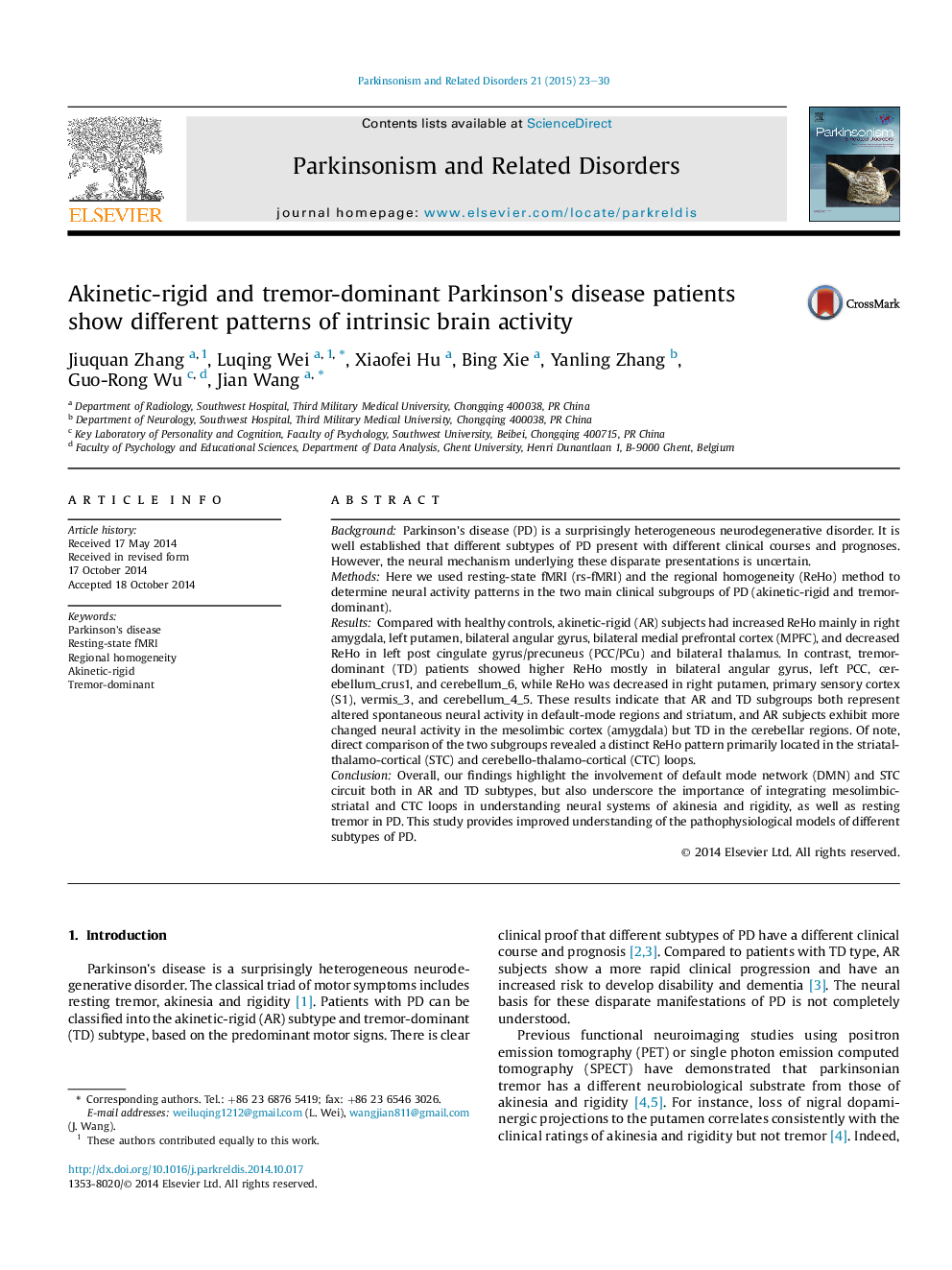| کد مقاله | کد نشریه | سال انتشار | مقاله انگلیسی | نسخه تمام متن |
|---|---|---|---|---|
| 1920510 | 1048704 | 2015 | 8 صفحه PDF | دانلود رایگان |
• Distinct neural activity patterns at baseline state in PD subtypes.
• The involvement of default-mode regions and striatum both in AR and TD types.
• The cerebello-thalamo-cortical loop contributes mostly to resting tremor of PD.
• The mesolimbic-striatal circuit implicated in AR subgroup.
BackgroundParkinson's disease (PD) is a surprisingly heterogeneous neurodegenerative disorder. It is well established that different subtypes of PD present with different clinical courses and prognoses. However, the neural mechanism underlying these disparate presentations is uncertain.MethodsHere we used resting-state fMRI (rs-fMRI) and the regional homogeneity (ReHo) method to determine neural activity patterns in the two main clinical subgroups of PD (akinetic-rigid and tremor-dominant).ResultsCompared with healthy controls, akinetic-rigid (AR) subjects had increased ReHo mainly in right amygdala, left putamen, bilateral angular gyrus, bilateral medial prefrontal cortex (MPFC), and decreased ReHo in left post cingulate gyrus/precuneus (PCC/PCu) and bilateral thalamus. In contrast, tremor-dominant (TD) patients showed higher ReHo mostly in bilateral angular gyrus, left PCC, cerebellum_crus1, and cerebellum_6, while ReHo was decreased in right putamen, primary sensory cortex (S1), vermis_3, and cerebellum_4_5. These results indicate that AR and TD subgroups both represent altered spontaneous neural activity in default-mode regions and striatum, and AR subjects exhibit more changed neural activity in the mesolimbic cortex (amygdala) but TD in the cerebellar regions. Of note, direct comparison of the two subgroups revealed a distinct ReHo pattern primarily located in the striatal-thalamo-cortical (STC) and cerebello-thalamo-cortical (CTC) loops.ConclusionOverall, our findings highlight the involvement of default mode network (DMN) and STC circuit both in AR and TD subtypes, but also underscore the importance of integrating mesolimbic-striatal and CTC loops in understanding neural systems of akinesia and rigidity, as well as resting tremor in PD. This study provides improved understanding of the pathophysiological models of different subtypes of PD.
Journal: Parkinsonism & Related Disorders - Volume 21, Issue 1, January 2015, Pages 23–30
